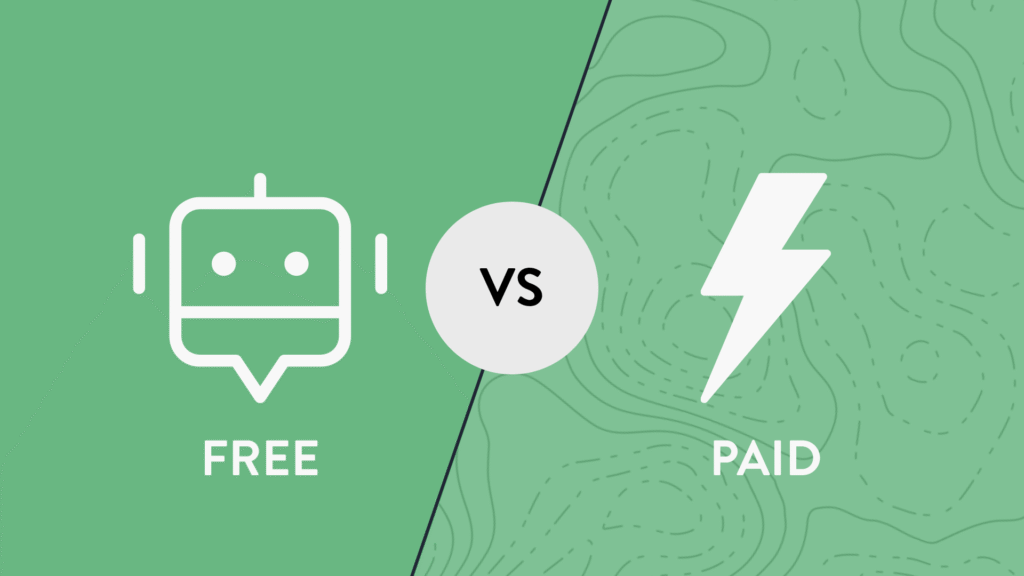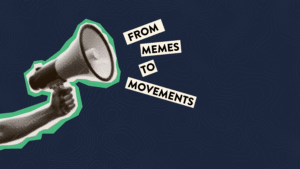Artificial intelligence is no longer a futuristic idea—it’s here and helping businesses work smarter, faster, and more creatively.
ChatGPT, OpenAI’s generative AI platform, is among the most powerful tools available. Whether you’re drafting marketing content, automating customer support, or building your next big idea, ChatGPT can be an incredibly versatile assistant.
But here’s the catch: ChatGPT has two tiers, free and paid, with different capabilities. How do you decide which one best fits your business needs?
This post will explore what’s currently available through ChatGPT (powered by the advanced GPT-4o model), highlight the most significant differences between the free and paid ChatGPT versions, and help you determine which is your best fit.
What Is ChatGPT?
ChatGPT is a conversational AI tool that uses large language models (LLMs) to understand prompts and generate natural, human-like responses. Developed by OpenAI, it’s trained on massive datasets to assist with everything from writing and research to code and design.
It’s like having an editor, researcher, creative partner, and junior developer, capable of helping with blog outlines, emails, spreadsheets, and much more.
Meet GPT-4o (“Omni”) – The Engine Behind It All
The latest version of ChatGPT is GPT-4o—short for “Omni.” It combines text, image, voice, and code understanding in one seamless experience. It’s faster, more expressive, and more intuitive than previous models.
This version is now the default for both free and paid ChatGPT users. However, the features and access limits vary significantly depending on your plan.
Free vs. ChatGPT Plus: What’s the Difference
The free plan gives you access to GPT-4o but has restrictions. You’re limited to 16 messages every three hours, and once you hit that cap, you’re bumped down to GPT-3.5. You also won’t be able to use advanced tools like image generation, file uploads, or voice interaction. While the experience is still powerful, response times can lag during busy periods.
By contrast, ChatGPT Plus—OpenAI’s $20/month subscription—unlocks the whole experience. You can send up to 80 GPT-4o messages every three hours and still have access to GPT-4 (40 messages in the same time frame). Users also get advanced tools, including DALL·E for generating images, voice capabilities, file uploads, and a code interpreter for data analysis. You’ll also benefit from faster performance and priority access during peak times.
In short, the free version is perfect for casual users and teams exploring AI, while the paid version is ideal for professionals who rely on ChatGPT as part of their daily workflow.
A Closer Look at the Tools in ChatGPT Plus
The tools in ChatGPT Plus open up some exciting possibilities. This is a quick overview of the toolbar and real-world examples of its uses. Please note that I had ChatGPT create this simple graphic for me using the image tool.
The Browsing Tool gives you real-time access to the Internet, which means you can ask ChatGPT to pull current stats or verify facts—great for marketers or researchers looking for up-to-date information.
With the Image Tool, you can generate visuals from text prompts or edit existing images. This is helpful for designers mocking up concepts or content creators looking to enhance blog posts.
The Code Interpreter, or Advanced Data Analysis, lets you process spreadsheets, perform calculations, and generate charts. For example, if your team wants insights from sales data, you can upload the file and ask ChatGPT to identify trends.
The File Upload feature allows you to drag in PDFs, spreadsheets, or presentations and instantly get summaries, rewrites, or feedback. For example, a business owner preparing for a client meeting could upload a proposal and get a condensed, presentation-ready version in seconds.
How Businesses Use ChatGPT
Teams across departments use ChatGPT in various ways. Marketing professionals rely on it for campaign ideas, content planning, and A/B testing headlines. Sales teams use it to personalize outreach and write proposals. Customer service teams draft chatbot replies and knowledge base articles. Developers debug code and write documentation; operations teams use it for meeting notes and task planning.
Whatever your role, ChatGPT can likely lighten the load and speed up your workflow.
Tips to Maximize Your ChatGPT Experience
To get the best results, be clear and specific in your prompts. Use system-level instructions like “Act as a branding expert” to guide tone and role. Don’t be afraid to follow up or ask for revisions. And once you’ve found good prompts, save them for future use. You can connect ChatGPT with tools like Notion, Canva, or Zapier to create a more automated and productive workflow.
Free vs. Paid ChatGPT
GPT-4o delivers serious value in free and paid versions, but the right choice depends on how often and deeply you plan to use it.
The free version is a great starting point for experimenting or needing occasional assistance. But if ChatGPT is becoming part of your regular workflow—or you want access to the complete set of tools and features—the Plus plan is well worth the upgrade.
At Dogwood Media Solutions, we help businesses implement tools like ChatGPT to streamline their operations, enhance creativity, and confidently scale.
Want to explore what AI could do for your team? Let’s talk.


